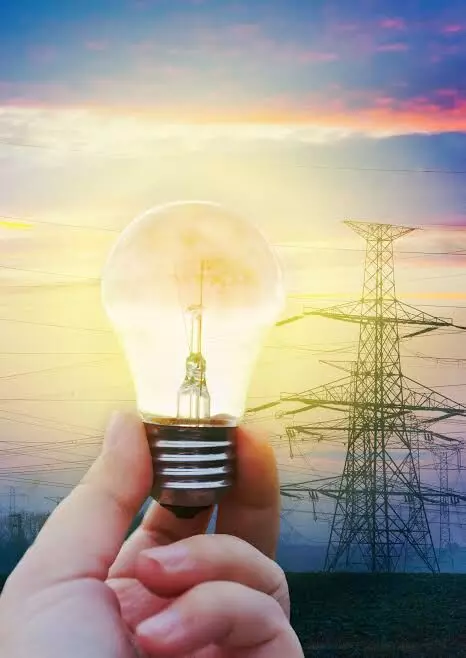Privatisation of Electricity Distribution: Lessons from India and Beyond

The ongoing uproar over the privatisation of electricity distribution in Uttar Pradesh has reopened a long-standing debate about whether handing over public utilities to private entities truly delivers better outcomes for consumers and the economy. At the heart of the matter lies a ₹19,600 crore revenue shortfall faced by Uttar Pradesh Power Corporation Limited (UPPCL), which the government argues can be addressed through private investment. While proponents cite efficiency, reduced transmission losses, and financial stability, critics warn of inflated loss figures, job losses, higher tariffs, and the erosion of public accountability. To understand the potential implications for Uttar Pradesh, it is vital to assess how electricity privatisation has fared in other Indian states and abroad.
One of the most frequently cited examples in favor of privatisation is Delhi, where the power distribution system was handed over to private companies—BSES Rajdhani, BSES Yamuna, and Tata Power Delhi Distribution—in 2002. Before privatisation, Delhi's Aggregate Technical and Commercial (AT&C) losses were over 55%. By 2021, these losses had fallen below 10%, according to Delhi Electricity Regulatory Commission (DERC) reports. This drastic reduction translated into improved billing efficiency, fewer outages, and significant infrastructure upgrades, including better metering systems and online services. However, critics argue that these benefits were partly subsidized by government guarantees and tariff adjustments, and thus do not present a fully independent success story.
In contrast, Uttar Pradesh’s previous experiments with privatisation have not been as fruitful. In Agra and Greater Noida, private licensees were given the responsibility of power distribution. Both cases saw limited success in improving infrastructure or reducing losses. In fact, the Agra experiment ended in 2015 after Torrent Power pulled out citing unmanageable losses and resistance from UPPCL employees. Similarly, Greater Noida’s private utility faced scrutiny for failing to meet service-level benchmarks. These cases illustrate the complexity of replicating the Delhi model, especially in regions with weaker institutional support and consumer compliance issues.
Other Indian states have had mixed results. In Odisha, one of the earliest states to privatise power distribution in the 1990s, the experience was marked by chronic underperformance, regulatory disputes, and eventual government takeover of two major distribution areas. Odisha's average AT&C losses remained stubbornly high for years, often above 35%, leading to widespread dissatisfaction among consumers. After multiple takeovers and re-tendering, the state now operates under a hybrid model with mixed private-public ownership, which offers some lessons on balancing efficiency with accountability.
At the global level, Latin America offers cautionary tales. In Argentina and Bolivia, electricity privatisation in the 1990s led to massive social unrest due to steep tariff hikes and blackouts. Bolivia’s infamous Cochabamba Water War, while focused on water, parallels how privatising basic utilities without adequate regulatory frameworks can spark large-scale protests. Conversely, countries like the United Kingdom have seen relatively smoother transitions, although they too have faced criticism over high executive compensation and periodic pricing controversies.
Data from the World Bank and International Energy Agency suggests that private participation in electricity distribution can yield efficiency gains—particularly in billing, collection, and loss reduction—when paired with robust regulation and consumer protection. However, such gains are far from automatic. The success of privatisation depends heavily on the financial health of the utility prior to transition, regulatory independence, quality of governance, and transparency of the bidding and licensing process.
This brings us back to the concerns in Uttar Pradesh. With 54.24 lakh consumers defaulting on ₹36,353 crore in dues and another 78.65 lakh consumers owing ₹36,117 crore, the financial distress of UPPCL appears more rooted in poor recovery mechanisms than inherent inefficiency. Critics claim that these loss figures have been inflated or selectively interpreted to justify privatisation. If true, this undermines public trust and raises questions about whether alternative solutions—such as improving billing infrastructure, smart metering, and stricter enforcement—have been adequately explored.
Another concern is the socio-economic impact. A proposed 30% tariff hike for 2025–26 has triggered fears that privatisation will pass the financial burden onto consumers, especially those in rural and low-income urban areas. Employees, too, fear massive job cuts or contract-based employment, which could weaken the technical backbone of the utility. In a state like Uttar Pradesh, where electricity theft and political interference in billing are chronic issues, private players may either withdraw or raise prices, exacerbating inequality.
Ultimately, the privatisation of electricity distribution should not be viewed as a panacea but rather a structural reform that demands careful planning, transparency, and strong oversight. The UP Electricity Regulatory Commission’s upcoming review of the bidding process could be a defining moment. If the process lacks credibility, it risks triggering a domino effect of public opposition and operational failure. The experience of other states and countries makes it clear that privatisation without accountability, public trust, and regulatory discipline is unlikely to succeed. For Uttar Pradesh, the path forward must balance efficiency with equity, innovation with inclusion, and growth with governance.
